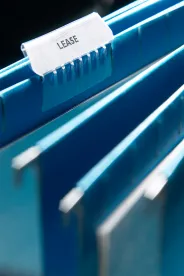Bankruptcy Basics for New and Non-Bankruptcy Attorneys
One critical component of chapter 11 bankruptcy cases is the debtor’s ability to assume or reject certain executory contracts, including leases of nonresidential real property. Under section 365 of the Bankruptcy Code, a chapter 11 debtor has 120 days (currently 210 days pursuant to an extension in the CARES Act) to assume or reject leases. This assumption/rejection window can be extended by court order for an additional 90 days. Any further extension requires agreement of the debtor and the landlord.
Assumption of a lease in chapter 11 allows for the lease to remain ongoing throughout the life of the bankruptcy case. In order to assume a lease, the debtor must cure any arrears and show adequate assurance of future performance under the lease.
Similarly, a debtor may assume and assign a lease. Assumption and assignment may occur under the Bankruptcy Code even if the lease includes a clause preventing assignment. Assumption with an intent to assign still requires curing all arrears and a showing by the assignee of adequate assurance of future performance. If cure and adequate assurances are satisfied, the lease will be assumed under the current terms of the lease.
If a lease is not assumed in the timeframe provided by the Bankruptcy Code, it shall be deemed rejected. Rejection results in the termination of the lease. Upon rejection, either by affirmative action by the debtor to reject the lease or by expiration of the assumption window, the lease is deemed terminated as of the date that the debtor filed for bankruptcy. The landlord may retake possession of the property upon rejection and is owed breach damages to be calculated starting from the petition date.
Rejection damages are subject to a statutory cap under Bankruptcy Code section 502(b)(6). This statutory cap is intended to ensure that potentially large landlord rejection damages do not disproportionately affect other unsecured creditors upon rejection. The cap is the greater of (1) one year’s rent or (2) the rent for 15 percent, not to exceed three years, of the remaining term of the lease. Typically, the cap takes the place of mitigation factors, as courts treat the imposition of the cap as a form of mitigation, meaning that other mitigation issues are not considered when calculating the capped damages.
In sum, the Bankruptcy Code allows for a debtor to assume or reject commercial leases in a chapter 11 bankruptcy. The debtor can also freely assign leases, provided the cure and adequate assurances of future performance are provided. The decision to reject a lease may result in substantial, albeit capped, rejection damages claims for any landlord whose lease is rejected.




 />i
/>i

